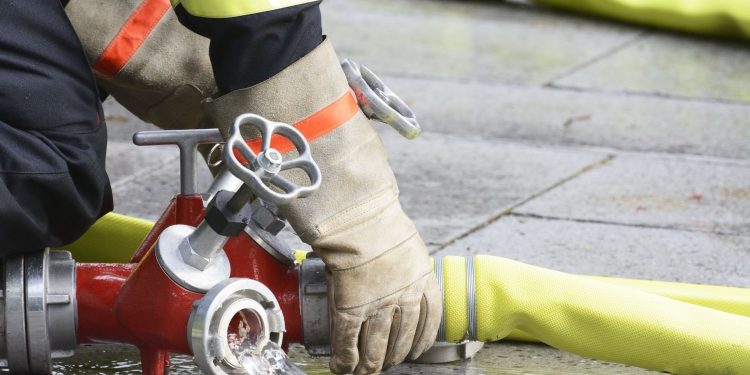Protective gloves are an essential component of firefighter uniforms. Utilize these criteria to choose a pair of firefighting gloves that are right for you.
Firefighters regularly encounter scorching, sharp, and biohazardous materials while on the job. Durable PPE is essential to keeping firefighters safe while in action. To prevent hand injuries, firefighters don a pair of fire protective gloves. Without reliable pairs of protective firefighter gloves, firefighters would be susceptible to all kinds of scrapes, burns, and bloodborne pathogens. For different types of firefighting roles, there are different kinds of gloves. Read the following tips for choosing the right firefighting glovesto help narrow down the ideal pair.
Type
Structural
Firefighters who respond to structural fires will wear structural firefighter gloves to protect themselves from scorching infrastructure materials. These gloves safeguard firefighters’ hands from backdrafts, flashovers, high-heat areas, steam, chemicals, and other hazards they’re likely to encounter in a burning building.
Wildland
Typically working in non-urban areas, wildland firefighters don gloves that vary greatly from structural gloves. Because wildland fires are so different from structural fires, the gloves are designed with features that optimize safety against hazards wildland firefighters are more likely to face.
Rescue
Rescue gloves have unique designs that make them optimal for extrication and rescue missions. They primarily protect firefighters from abrasive materials, bodily fluids, and hazardous vehicle liquids they may encounter such as battery acid, gasoline, or hydraulic fluid.
Additional Types of Firefighter Gloves
Your search won’t be limited to structural, wildland, and rescue gloves, though. Other types of specialty firefighting gloves include:
- Water rescue
- USAR (Urban search and rescue)
- Rope use
- Utility handling
- Mechanic
Dexterity
As a firefighter, your ability to firmly grasp objects around you is essential to safety and efficiency. Glove designers typically incorporate texture on the exterior of the gloves to enhance firefighters’ ability to grab and grip tools, equipment, and other materials.
Many glove designers attempt to minimize folds in the palm of the glove by designing slimmer gloves out of still highly protective textiles. The type of glove that is best for you will depend on your responsibilities. For example, you would need gloves with ample dexterity when handling axes and other firefighting hand tools; however, you may not need the most dexterous pair of gloves when manning the fire engine.
Donning and Doffing
Donning (putting on) and doffing (taking off) gloves should neither be too easy or too difficult. How a pair of gloves’ design impacts a firefighter’s ability to don or doff also impacts their gripping abilities.
Too wide of openings or palm size and overly soft texture in gloves can hinder a firefighter’s grip. Textured liner gloves make for a tighter fit, as they provide greater gripping power.
Topping our list of tips for choosing the right firefighting glovesis finding a pair that strikes a balance of ease when it comes to donning and doffing. You don’t want it to be impossible to remove your gloves at the end of the day, but you don’t want them sliding off during missions, either. Opt for a snug palm and wrist fit that provides the slightest of wiggle room.




